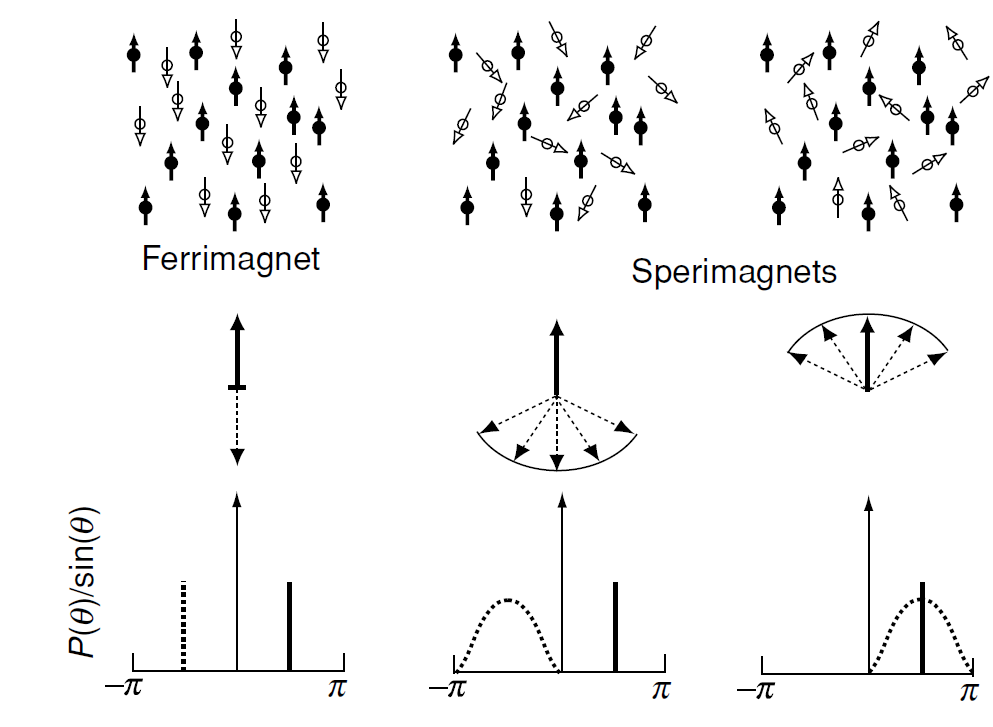


 الفيزياء الكلاسيكية
الفيزياء الكلاسيكية
 الكهربائية والمغناطيسية
الكهربائية والمغناطيسية
 علم البصريات
علم البصريات
 الفيزياء الحديثة
الفيزياء الحديثة
 النظرية النسبية
النظرية النسبية
 الفيزياء النووية
الفيزياء النووية
 فيزياء الحالة الصلبة
فيزياء الحالة الصلبة
 الليزر
الليزر
 علم الفلك
علم الفلك
 المجموعة الشمسية
المجموعة الشمسية
 الطاقة البديلة
الطاقة البديلة
 الفيزياء والعلوم الأخرى
الفيزياء والعلوم الأخرى
 مواضيع عامة في الفيزياء
مواضيع عامة في الفيزياء|
Read More
Date: 21-12-2020
Date: 8-10-2020
Date: 12-2-2021
|
Two-network structures
One might imagine a situation where two amorphous sublattices could be defined topologically, as sketched in Fig. 1, but it seems unlikely that this ever arises in practice.
There remains, however, the possibility of distinguishing two magnetic subnetworks in amorphous solids on a chemical basis. Generally, these are the sublattices composed of 3d and 4f atoms, The d–d exchange is strongly ferromagnetic, defining a ferromagnetic 3d subnetwork, and the 3d–4f interactions then tend to align the 4f subnetwork spins antiparallel to the 3d subnetwork. Hence the subnetwork moments are aligned parallel for heavy rare-earths, but antiparallel for the light rare-earths. We can therefore have an amorphous ferrimagnet where the A and B subsystems are defined chemically. An example is a-Gd25Co75. There may be a compensation point at the temperature where M4f >M3d , just as in crystalline ferrimagnets.
For rare-earths with strong uniaxial anisotropy and weak exchange coupling to the 3d subnetwork, their local easy axes are defined by the local crystal-field

Figure 1: Types of disorder on two-dimensional monatomic and diatomic networks.
interaction DiJ 2zi . These local easy axes are random, leading to the sperimagnetic structures illustrated in Fig. 2.

Figure 2: Possible two-subnetwork magnetic structures in amorphous binary alloys.



|
|
|
|
هل يمكن أن تكون الطماطم مفتاح الوقاية من السرطان؟
|
|
|
|
|
|
|
اكتشاف عرائس"غريبة" عمرها 2400 عام على قمة هرم بالسلفادور
|
|
|
|
|
|
|
جامعة الكفيل تقيم ندوة علمية عن الاعتماد الأكاديمي في جامعة جابر بن حيّان
|
|
|